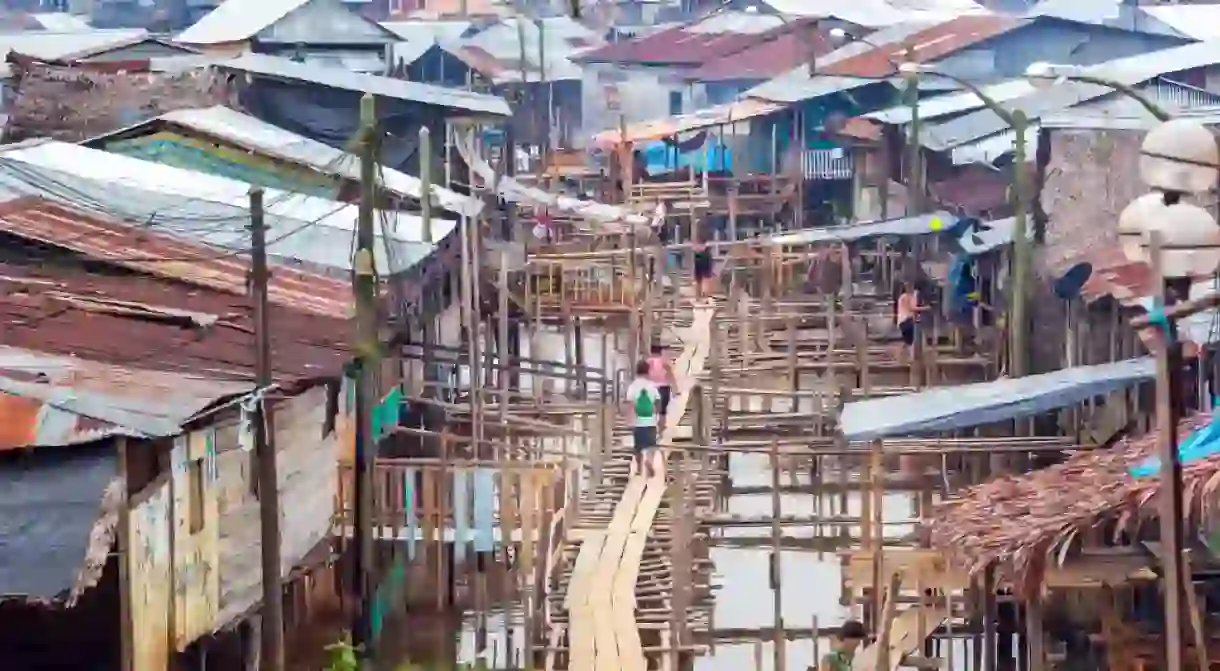An Adventurer’s Guide to the Floating City of Belén, Peru

Resting above the water on the outskirts of Iquitos lies one of South America’s most remarkable settlements: the fascinating floating city of Belén. This is a community that relies on canoes instead of cars, a place where residents live a unique riverside existence that has led to the moniker “The Venice of Peru.”
But Belén is a far cry from the splendor of its enchanting Italian counterpart. Thousands live in the overcrowded, buoyant shanty town, facing conditions of extreme poverty without adequate access to clean water, sanitation, or electricity.

As the waters recede completely during the driest months of the year (around July/August), the villagers are forced to endure unhygienic muddy conditions and suffer greatly from mosquito and water born disease. To make matters worse, poverty related issues such as crime, alcoholism, domestic violence, and unemployment run rampant in the community.

Yet for the intrepid traveler longing for a unique cultural experience, this indigenous community is among the most fascinating in Peru. Most buildings have been constructed on balsa wood rafts, causing them to rise and dip with the water depending on the season. Those with the means build more permanent, concrete structures, simply moving out of the bottom floor as the water creeps slowly upwards.

Throughout the day, a barrage of canoes ferry passengers on their everyday errands, bringing children to and from school or delivering fresh jungle fruits right to the family home. Among the maze of makeshift residences are schools, restaurants, shops, a gas station, and even a hotel.

Most residents have migrated from jungle villages deep within the Amazon in the search of a better life and the chance of a decent education for their children. Hunting and fishing are common jobs among men, while their wives sell produce to the more affluent in Iquitos.
The best time to visit is around 7 a.m. when the sun is less fierce and there is a flurry of activity as villagers from nearby settlements come to sell their wares. Those with rudimentary Spanish can easily go it alone by taking a taxi to Los Chinos, walking to the port, and contracting a local boatman. Otherwise, almost all Iquitos travel agents offer tours to the region at any time of day.

Situated on the mainland overlooking the town is the famous Mercado Belén, a bustling open-air market that is among the most vibrant in the Amazon. Aside from the usual stalls of everyday goods, it’s the dizzying display of traditional Amazon medicine that is of most interest to travelers. Known as Pasaje Paquito, the strip is crammed full of roots, herbs, and animal extracts that are said to cure all sorts of ailments, from respiratory illness to baldness and even a broken heart.

Sadly, endangered Amazonian fauna is regularly sold in the market, a fact the Peruvian government seems powerless to stop. Visitors are advised to be aware of what they are purchasing so as not to contribute to the problem.













